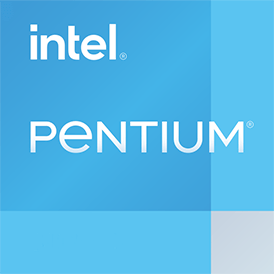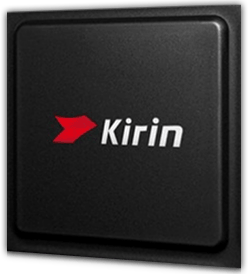Intel Pentium E6500K vs HiSilicon Kirin 710A
Last updated:
CPU comparison with benchmarks

|
|
|
| Intel Pentium E6500K | HiSilicon Kirin 710A | |
CPU comparisonIntel Pentium E6500K or HiSilicon Kirin 710A - which processor is faster? In this comparison we look at the differences and analyze which of these two CPUs is better. We compare the technical data and benchmark results.
The Intel Pentium E6500K has 2 cores with 2 threads and clocks with a maximum frequency of 2.93 GHz. Up to 16 GB of memory is supported in 2 memory channels. The Intel Pentium E6500K was released in Q3/2009. The HiSilicon Kirin 710A has 8 cores with 8 threads and clocks with a maximum frequency of 2.00 GHz. The CPU supports up to 6 GB of memory in 2 memory channels. The HiSilicon Kirin 710A was released in Q2/2020. |
||
| Intel Pentium (150) | Family | HiSilicon Kirin (29) |
| Intel Pentium E5000/E6000 (13) | CPU group | HiSilicon Kirin 710A (1) |
| 2 | Generation | 5 |
| Wolfdale (Penryn) | Architecture | Cortex-A73 / Cortex-A53 |
| Desktop / Server | Segment | Mobile |
| -- | Predecessor | -- |
| -- | Successor | -- |
|
|
||
CPU Cores and Base FrequencyThe Intel Pentium E6500K has 2 CPU cores and can calculate 2 threads in parallel. The clock frequency of the Intel Pentium E6500K is 2.93 GHz while the HiSilicon Kirin 710A has 8 CPU cores and 8 threads can calculate simultaneously. The clock frequency of the HiSilicon Kirin 710A is at 2.00 GHz. |
||
| Intel Pentium E6500K | Characteristic | HiSilicon Kirin 710A |
| 2 | Cores | 8 |
| 2 | Threads | 8 |
| normal | Core architecture | hybrid (big.LITTLE) |
| No | Hyperthreading | No |
| Yes | Overclocking ? | No |
| 2.93 GHz 2x Penryn |
A-Core | 2.00 GHz 4x Cortex-A73 |
| -- | B-Core | 1.60 GHz 4x Cortex-A53 |
Internal GraphicsThe Intel Pentium E6500K or HiSilicon Kirin 710A has integrated graphics, called iGPU for short. The iGPU uses the system's main memory as graphics memory and sits on the processor's die. |
||
| no iGPU | GPU | ARM Mali-G51 MP4 |
| GPU frequency | 0.65 GHz | |
| -- | GPU (Turbo) | 1.00 GHz |
| -- | GPU Generation | Bifrost 1 |
| Technology | 12 nm | |
| Max. displays | 2 | |
| -- | Compute units | 8 |
| -- | Shader | 128 |
| No | Hardware Raytracing | No |
| No | Frame Generation | No |
| -- | Max. GPU Memory | 4 GB |
| -- | DirectX Version | 11 |
Hardware codec supportA photo or video codec that is accelerated in hardware can greatly accelerate the working speed of a processor and extend the battery life of notebooks or smartphones when playing videos. |
||
| no iGPU | GPU | ARM Mali-G51 MP4 |
| No | Codec h265 / HEVC (8 bit) | Decode / Encode |
| No | Codec h265 / HEVC (10 bit) | No |
| No | Codec h264 | Decode / Encode |
| No | Codec VP9 | Decode / Encode |
| No | Codec VP8 | Decode / Encode |
| No | Codec AV1 | No |
| No | Codec AVC | Decode / Encode |
| No | Codec VC-1 | Decode / Encode |
| No | Codec JPEG | Decode / Encode |
Memory & PCIeThe Intel Pentium E6500K can use up to 16 GB of memory in 2 memory channels. The maximum memory bandwidth is 21.3 GB/s. The HiSilicon Kirin 710A supports up to 6 GB of memory in 2 memory channels and achieves a memory bandwidth of up to --. |
||
| Intel Pentium E6500K | Characteristic | HiSilicon Kirin 710A |
| DDR3-1333, DDR2-800 | Memory | LPDDR4, LPDDR3 |
| 16 GB | Max. Memory | 6 GB |
| 2 (Dual Channel) | Memory channels | 2 (Dual Channel) |
| 21.3 GB/s | Max. Bandwidth | -- |
| No | ECC | No |
| 2.00 MB | L2 Cache | -- |
| -- | L3 Cache | 1.00 MB |
| -- | PCIe version | -- |
| -- | PCIe lanes | -- |
| -- | PCIe Bandwidth | -- |
Thermal ManagementThe thermal design power (TDP for short) of the Intel Pentium E6500K is 65 W, while the HiSilicon Kirin 710A has a TDP of 5 W. The TDP specifies the necessary cooling solution that is required to cool the processor sufficiently. |
||
| Intel Pentium E6500K | Characteristic | HiSilicon Kirin 710A |
| 65 W | TDP (PL1 / PBP) | 5 W |
| -- | TDP (PL2) | -- |
| -- | TDP up | -- |
| -- | TDP down | -- |
| -- | Tjunction max. | -- |
Technical detailsThe Intel Pentium E6500K is manufactured in 45 nm and has 2.00 MB cache. The HiSilicon Kirin 710A is manufactured in 14 nm and has a 1.00 MB cache. |
||
| Intel Pentium E6500K | Characteristic | HiSilicon Kirin 710A |
| 45 nm | Technology | 14 nm |
| Monolithic | Chip design | Chiplet |
| x86-64 (64 bit) | Instruction set (ISA) | Armv8-A (64 bit) |
| MMX, SSE, SSE2, SSE3 | ISA extensions | -- |
| LGA 775 | Socket | -- |
| VT-x | Virtualization | None |
| No | AES-NI | No |
| Windows 10, Linux | Operating systems | Android |
| Q3/2009 | Release date | Q2/2020 |
| -- | Release price | -- |
| show more data | show more data | |
Rate these processors
Average performance in benchmarks
⌀ Single core performance in 1 CPU benchmarks
⌀ Multi core performance in 1 CPU benchmarks
Geekbench 5, 64bit (Single-Core)
Geekbench 5 is a cross plattform benchmark that heavily uses the systems memory. A fast memory will push the result a lot. The single-core test only uses one CPU core, the amount of cores or hyperthreading ability doesn't count.
|
|
Intel Pentium E6500K
2C 2T @ 2.93 GHz |
||
|
|
HiSilicon Kirin 710A
8C 8T @ 2.00 GHz |
||
Geekbench 5, 64bit (Multi-Core)
Geekbench 5 is a cross plattform benchmark that heavily uses the systems memory. A fast memory will push the result a lot. The multi-core test involves all CPU cores and taks a big advantage of hyperthreading.
|
|
Intel Pentium E6500K
2C 2T @ 2.93 GHz |
||
|
|
HiSilicon Kirin 710A
8C 8T @ 2.00 GHz |
||
Geekbench 6 (Single-Core)
Geekbench 6 is a benchmark for modern computers, notebooks and smartphones. What is new is an optimized utilization of newer CPU architectures, e.g. based on the big.LITTLE concept and combining CPU cores of different sizes. The single-core benchmark only evaluates the performance of the fastest CPU core, the number of CPU cores in a processor is irrelevant here.
|
|
Intel Pentium E6500K
2C 2T @ 2.93 GHz |
||
|
|
HiSilicon Kirin 710A
8C 8T @ 2.00 GHz |
||
Geekbench 6 (Multi-Core)
Geekbench 6 is a benchmark for modern computers, notebooks and smartphones. What is new is an optimized utilization of newer CPU architectures, e.g. based on the big.LITTLE concept and combining CPU cores of different sizes. The multi-core benchmark evaluates the performance of all of the processor's CPU cores. Virtual thread improvements such as AMD SMT or Intel's Hyper-Threading have a positive impact on the benchmark result.
|
|
Intel Pentium E6500K
2C 2T @ 2.93 GHz |
||
|
|
HiSilicon Kirin 710A
8C 8T @ 2.00 GHz |
||
iGPU - FP32 Performance (Single-precision GFLOPS)
The theoretical computing performance of the internal graphics unit of the processor with simple accuracy (32 bit) in GFLOPS. GFLOPS indicates how many billion floating point operations the iGPU can perform per second.
|
|
Intel Pentium E6500K
@ 0.00 GHz |
||
|
|
HiSilicon Kirin 710A
ARM Mali-G51 MP4 @ 1.00 GHz |
||
AnTuTu 9 Benchmark
The AnTuTu 9 benchmark is very well suited to measuring the performance of a smartphone. AnTuTu 9 is quite heavy on 3D graphics and can now also use the "Metal" graphics interface. In AnTuTu, memory and UX (user experience) are also tested by simulating browser and app usage. AnTuTu version 9 can compare any ARM CPU running on Android or iOS. Devices may not be directly comparable when benchmarked on different operating systems.
In the AnTuTu 9 benchmark, the single-core performance of a processor is only slightly weighted. The rating is made up of the multi-core performance of the processor, the speed of the working memory, and the performance of the internal graphics.
In the AnTuTu 9 benchmark, the single-core performance of a processor is only slightly weighted. The rating is made up of the multi-core performance of the processor, the speed of the working memory, and the performance of the internal graphics.
|
|
Intel Pentium E6500K
2C 2T @ 2.93 GHz |
||
|
|
HiSilicon Kirin 710A
8C 8T @ 2.00 GHz |
||
AnTuTu 8 Benchmark
The AnTuTu 8 Benchmark measures the performance of a SoC. AnTuTu benchmarks the CPU, GPU, Memory as well as the UX (User Experience) by simulating browser and app usage. AnTuTu can benchmark any ARM CPU that runs under Android or iOS. Devices may not be directly compareable if the benchmark has been performed under different operating systems.
In the AnTuTu 8 benchmark, the single-core performance of a processor is only slightly weighted. The evaluation consists of the multi-core performance of the processor, the speed of the RAM and the performance of the internal graphics.
In the AnTuTu 8 benchmark, the single-core performance of a processor is only slightly weighted. The evaluation consists of the multi-core performance of the processor, the speed of the RAM and the performance of the internal graphics.
|
|
Intel Pentium E6500K
2C 2T @ 2.93 GHz |
||
|
|
HiSilicon Kirin 710A
8C 8T @ 2.00 GHz |
||
Estimated results for PassMark CPU Mark
Some of the CPUs listed below have been benchmarked by CPU-monkey. However the majority of CPUs have not been tested and the results have been estimated by a CPU-monkey’s secret proprietary formula. As such they do not accurately reflect the actual Passmark CPU mark values and are not endorsed by PassMark Software Pty Ltd.
|
|
Intel Pentium E6500K
2C 2T @ 2.93 GHz |
||
|
|
HiSilicon Kirin 710A
8C 8T @ 2.00 GHz |
||
Devices using this processor |
|
| Intel Pentium E6500K | HiSilicon Kirin 710A |
| Unknown | Honor 10X Lite |
Popular comparisons containing this CPUs
back to index

